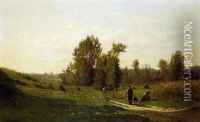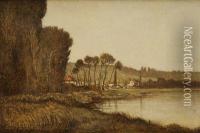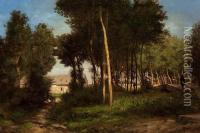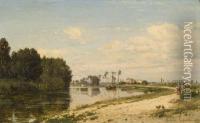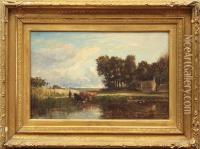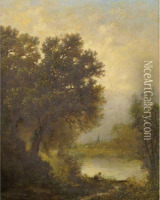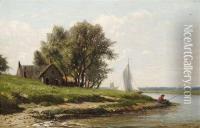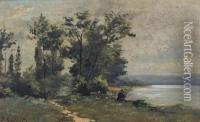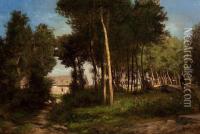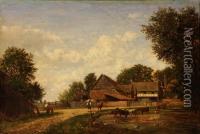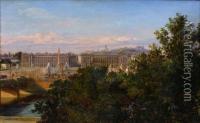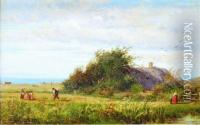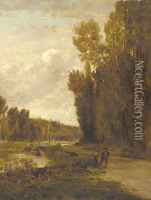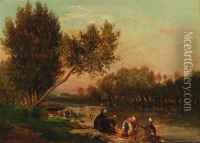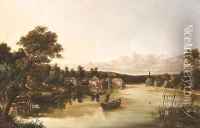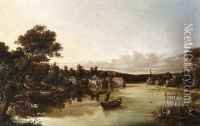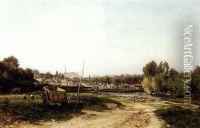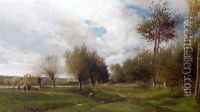Emile Charles Lambinet Paintings
Émile Charles Lambinet was a French landscape painter born on August 25, 1813, in Versailles, France. His artistic career began under the tutelage of his father, who was also a painter. He further honed his skills by studying under famous painters such as Horace Vernet and Paul Delaroche, both known for their historical and genre subjects.
Lambinet's work primarily focused on the French countryside, capturing the serene beauty of rural landscapes. He was particularly adept at rendering the effects of light and atmosphere, which gave his paintings a tranquil yet vivid quality. His style was influenced by the Barbizon School, a group of artists who emphasized the importance of painting nature in a more realistic and personal manner, away from the idealized landscapes that were popular in the academic circles of the time.
Throughout the 1840s and 1850s, Lambinet exhibited his work at the Paris Salon, the official art exhibition of the Académie des Beaux-Arts in Paris. His paintings received positive reviews, and he gained a reputation as a skilled landscape artist. He was awarded medals at the Salon in 1843 and 1857, which further cemented his status within the French art community.
Lambinet's landscapes often depicted the regions around the Seine, Eure, and Oise rivers. He was also inspired by the countryside of Normandy and Brittany, where he would travel to find new vistas and inspiration for his work. His approach to landscape painting was characterized by a delicate touch and a keen observation of nature, which allowed him to capture the changing seasons and varying times of day with fidelity and poetic grace.
Émile Charles Lambinet's legacy is that of a dedicated landscape painter who contributed to the French tradition of the genre. His works are appreciated for their quiet beauty and are collected by art enthusiasts who value the peaceful yet evocative scenes he portrayed. Lambinet died on September 28, 1877, in Bougival, a commune in the suburbs of Paris that had served as an inspiration for many of his paintings.
